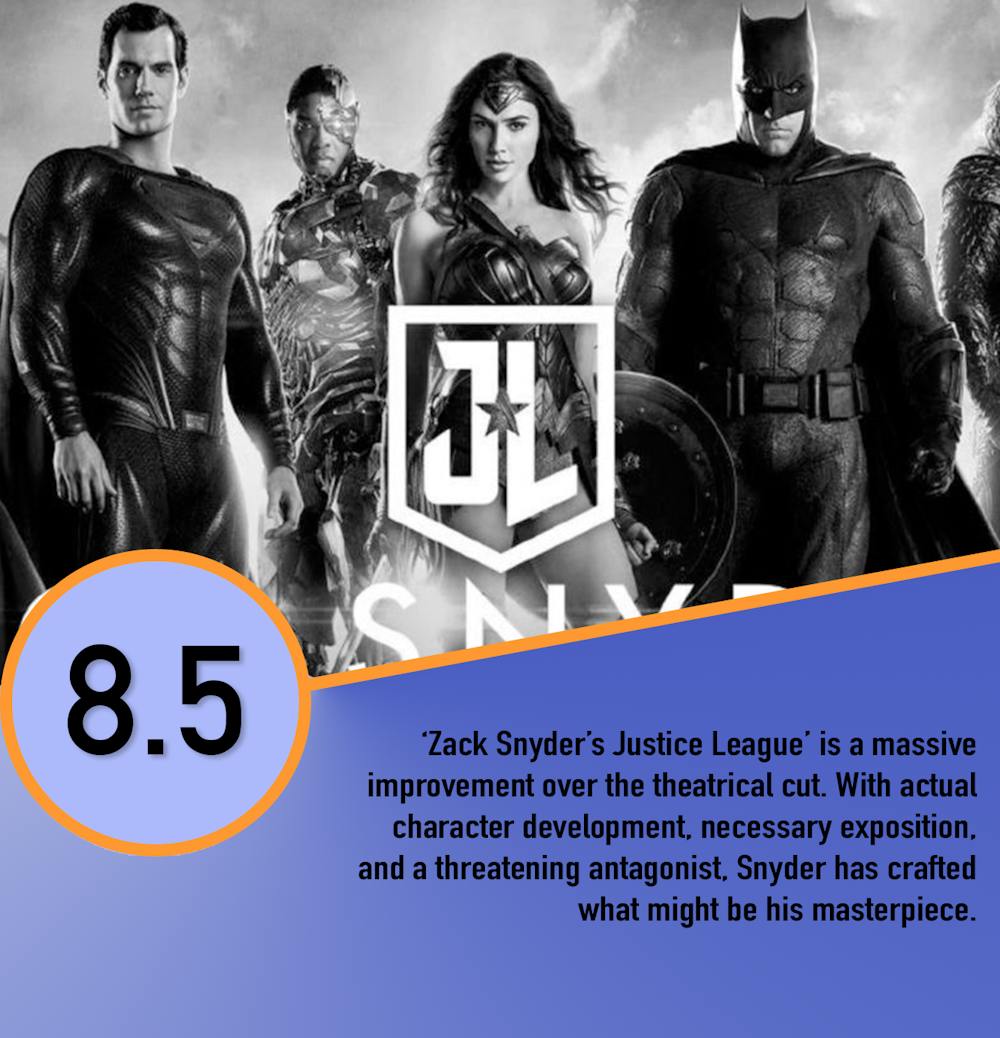
On Nov. 17, 2017, Warner Bros. released Justice League, the first live-action film to star the titular DC Comics superhero team. Unfortunately, it wasn’t the same film that director Zack Snyder was originally making. Earlier that year, he stepped down from the project after his daughter, Autumn, passed away. In his place, the studio hired Avengers director Joss Whedon to finish it. What resulted was a heavily reshot and rewritten mess of a film, not exactly the winner Warner Bros. was hoping for. Even now, it’s been implied that the studio knew what a disaster the theatrical cut really was.
After the theatrical cut’s critical and commercial failure, Snyder’s fanbase began to campaign for the release of his original version—famously labeled the “Snyder Cut.” For three-and-a-half years, the fanbase, naysayers, and Justice League actors like Jason Mamoa went back and forth on the existence of the film. Zack Snyder himself even entered the fray in 2019, confirming that his film really did exist after all. The campaign completed its goal in May 2020, when it was announced that the film—officially titled Zack Snyder’s Justice League―will be completed and released on the HBO Max streaming service. This version was eventually released on March 18, and unlike whatever the theatrical cut tried to accomplish, it wholly delivers on its thrilling and action-packed premise.
A Justice League of our own

Image from The New Republic
Zack Snyder’s Justice League shares the same general plot as the theatrical cut: Months after the events of Superman’s death in Batman v Superman: Dawn of Justice, Batman tasks himself with assembling a team of heroes—Wonder Woman, Aquaman, Cyborg, and The Flash—to help protect the Earth from an alien villain called Steppenwolf (more on him later). Steppenwolf is terrorizing the planet because he is searching for three Mother Boxes, ancient cubes that will terraform Earth and ultimately lay waste to it.
What makes Snyder’s cut superior is that it includes many, many elements that the theatrical cut left on the cutting room floor. One such element was tons of much-needed expository details, which would’ve helped explain certain plot points and character motivations. For example, in the theatrical cut, Steppenwolf knows—somehow—the exact location of a Mother Box hidden by the lost kingdom of Atlantis. Admittedly, it’s pretty minor, but it’s still something that isn’t explained. In Snyder’s cut, it’s actually shown how Steppenwolf found the Mother Box: he had to interrogate Atlantean soldiers to discover its location. Seeing scenes like this were such a relief: the Snyder Cut took the time to actually explain things that would be unclear to the viewer, and it managed to do this without insulting the viewer’s intelligence.
The heart of the matter

Image from GazetteXtra
Another egregious exclusion from the theatrical cut was the entirety of Cyborg’s (Victor Stone) character and backstory. Theatrical Cyborg was an empty vessel, for crying out loud! He clumsily discovered his abilities, had a decent relationship with his father, Silas, and just went on his merry way with the Justice League. (Not to mention that the CGI for Cyborg was comically laughable).
Thankfully, Cyborg is a far better character in Zack Snyder’s Justice League. Several years ago, Cyborg was touted as the “heart of the film” by Snyder himself, and he was right. The character’s backstory is explored extensively, revealing Victor’s strained relationship with Silas, his frustration over his condition, and—what is most notable—his good heart. There is a sequence in the film where Victor helps a struggling, single mother, and it is truly heartwarming to witness. Not only that, but there’s another sequence where Silas teaches Victor how to use his newfound abilities (something the theatrical cut didn’t bother to include).
Ray Fisher’s performance as the character is wonderful as well. He gives such humanity to Cyborg that I truly did feel sympathetic towards him, and I was very satisfied to see him triumph over his struggles.
A Steppenwolf in sheep’s clothing

Image from Looper
Yet another misstep of the theatrical cut was Steppenwolf. While performed decently by actor Ciarán Hinds, the theatrical Steppenwolf looked like a villain from a PlayStation 2-era fantasy game. (Complete with a belt that had a skull on it, I’m not kidding). His appearance didn’t make him threatening, and his lack of a real personality or motivation didn’t help that much.
Thankfully, Snyder’s Steppenwolf is an improvement. While his appearance is mired with overly spiky armor, Steppenwolf looks like a threatening alien monster. On top of that, he has a motivation here, too: he hopes that if he successfully finds the Mother Boxes, he’ll redeem himself in the eyes of his nephew, popular DC Comics villain Darkseid. This isn’t portrayed compellingly, but it’s still appreciated that a motivation is present for Steppenwolf in the first place.
Sources: The Hollywood Reporter, HuffPost, Vox, Screen Rant, Variety, Screen Rant
Images: The New Republic, GazetteXtra, Looper
Featured Image: GamesRadar
For more entertainment-related content, visit us at Byte BSU!


















